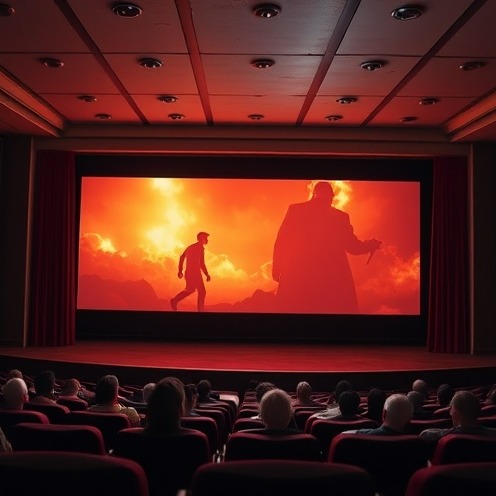
The Mysterious Sound That Haunts the Big Screen
Have you ever watched a movie and heard a dramatic screech that made you jump? If so, you’re not alone. There’s a particular cat sound effect that has woven itself into the fabric of cinematic history, used in countless films from beloved classics to spine-chilling thrillers. This sound, often dubbed the “Wilhelm Miaow,” tells a fascinating tale of its own, revealing just how deeply ingrained it is in film culture.
Historical Context: The Birth of a Sound Effect
The story of the Wilhelm Miaow began in 1988, when sound designer Wylie Stateman recorded a series of audio effects in his home. This particular screech came from his female kitten, Cheeta, who was just beginning to go into heat, accompanied by a male cat named Sylvester. Stateman’s decision to capture these natural feline sounds unknowingly birthed what would become one of the most recognized sound effects in modern filmmaking.
Cultural Importance: A Sound with Multiple Identities
Much like the less-puzzling Wilhelm Scream, the Wilhelm Miaow has become a staple in the sound designer's toolkit. It has been featured in movies spanning various genres—from the heartwarming moments in Babe and Toy Story to the frightful sequences in Pet Sematary and How the Grinch Stole Christmas. But what is it about this cat screech that makes it so compelling and ubiquitous? Its context-driven impact effectively adds layers of humor, tension, or surprise, enriching the viewer's experience.
The Internet's Obsession: Community and Analysis
The Wilhelm Miaow has sparked intrigue not just among film aficionados but also on platforms like Reddit and the Sound Effects Wiki, where enthusiasts have debated its origins and prevalence. Those discussions highlight an important aspect of media: audience engagement. As cinema-goers, we form an implicit agreement with these sound effects; they elicit emotional reactions that enhance the storytelling, whether or not we fully understand their roots.
Future Insights: Sound Effects in the Digital Age
As technology evolves, so too does the way in which sound effects are created and utilized in film. With software like Adobe Audition and sound design libraries becoming increasingly accessible, indie filmmakers can create their own unique sounds and shape their audio experience more than ever. Yet, the Wilhelm Miaow persists, standing as a testament to the legacy of sound effects that create collective memories across generations.
Common Misconceptions: The Misheard Cat
Many people might assume that the Wilhelm Miaow has its roots in high-budget sound studios or large production companies, but in fact, it originates from a homemade recording, a clear example of how grassroots creativity contributes to mainstream media. This tells us an essential lesson about film—sometimes the most impactful sounds are born in quiet moments at home, not on the grand stages we might expect.
Conclusion: Reflecting on Our Film Experiences
Next time you watch a movie and hear that unmistakable cat screech, take a moment to recognize the artistry and history behind the sound. It may seem like a fleeting moment, but the Wilhelm Miaow embodies the rich tapestry of sound design that colors our film experiences.
 Add Row
Add Row  Add
Add 




Write A Comment